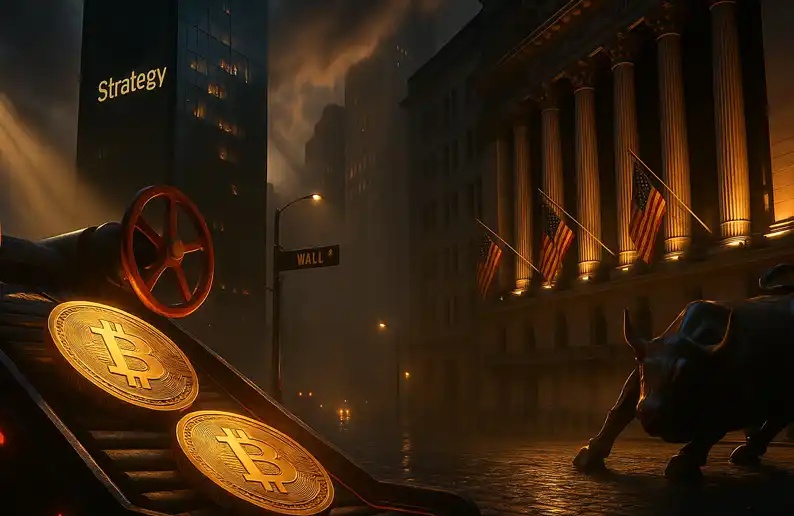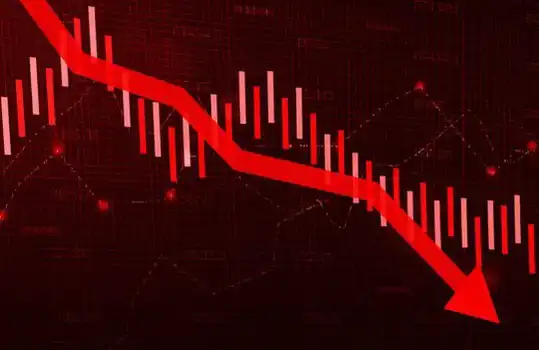Bitcoin 48 hours 30cm Dayang line, why is the mood so high?
In the last 2 days, bitcoin from the bottom of the continuous violent rally, the industry amazed, with the night of February 14 to the peak of more than 26,000, Bitcoin within 2 days of the rally of almost 30%. The last time such an exaggerated rise appeared to be on October 25, 2019, the industry's vindication anniversary. As for the rise, BlockBeats tries to tease out some of the underlying reasons for the rise.
The Silicon Valley bank panic is over
In the early hours of March 13th, just as markets were taking a breather from the Silicon Valley Bank affair, America's Treasury suddenly announced that it would provide up to $25 billion to support the Federal Reserve's emergency bank-term funding programme. In a joint statement with the Federal Reserve and the FDIC, it said depositors would have access to all their money on Monday and that taxpayers would not be liable for any losses related to the failure of Silicon Valley Bank. The FDIC deposit insurance fund is more than $100 billion, enough to cover all deposits at Silicon Valley Bank and Signature Bank.
A set of news "combination of punch" hit, to a certain extent ended the market due to the shutdown of Silicon Valley bank, the panic opened before the short positions began to continue to close the formation of trampling, officially started the Bitcoin 2 days of violence.
Continuing to raise interest rates may increase risks, and the market is calling for a pause or even a rate cut
As the 16th largest bank in the United States, Silicon Valley Bank only took 24 hours from the panic to the announcement that it was closed and taken over by FDIC. It is obvious that regulators attach great importance to this event, which to some extent represents the concern of the United States about its own financial system.
It is well known that every time the Fed has raised interest rates in history, it has eventually triggered a crisis, and the US economy has stabilised and taken off again amid the collapse of other countries' financial systems. The most important point in this financial game is that "the United States must not fail before the rest of the world."
A sharp sell-off in regional bank stocks on Monday after the failures of Silicon Valley Bank and Signature threatens to push the Fed into the position it has been hoping to avoid for the past year -- fighting inflation while avoiding affecting financial stability. Now it is likely to force the Fed to re-select its priorities.
With the combination of news, the probability of a quarter-point rate hike in March to a range of 4.75% to 5.00% rose to 96.0% in a short period of time, according to CME's FedWatch. The probability of a 50-basis-point rate hike fell directly from 80% previously to zero, with a 50-basis-point rate cut by the end of the year.
Goldman Sachs first said it no longer expected the Fed to raise rates at its March 22 meeting, given recent stress in the banking system. Leaving unchanged expectations that the Fed will raise rates by 25 basis points in May, June and July, the terminal rate is now expected to be 5.25-5.5%.
Nomura even expects the Fed to cut rates by 25 basis points and pause quantitative tightening in March.

As of the time of this publication, CME's FedWatch showed that the market's probability of no rate hike in March was currently 21.8 percent and the probability of a 25 basis point hike was 78.2 percent.
The bad news may be over
Since the Luna storm in March 2022, from the bankruptcy of Three Arrow Capital to the FTX storm, several skyscrapers in the crypto market have collapsed one after another, the currency price has fallen from the high of 69,000 yuan to around 20,000 yuan today, and the interest rate has gradually approached the previously expected peak.
Compared with ETH, SEC has stated several times before that BTC is a commodity, not a security. So the market is not worried about any challenge from the SEC, and Gray has been in a tug of war with the SEC over the rejection of the BTC spot ETF on March 7. Grayscale CEO Michael Sonnenshein has said he expects a decision on his company's lawsuit against the U.S. Securities and Exchange Commission's rejection of a Bitcoin physical ETF could come in the third quarter of this year.
Sonnenshein also said it was using all of its resources in its legal battle with the SEC. If U.S. regulators remain unwilling to recognize Bitcoin ETFs as legitimate securities, the company will take its fight to the Supreme Court if necessary. He also promised to cut rates to benefit clients if the ETF business gets regulatory approval.
This gives markets some reason to believe that the worst is behind us.
Bitcoin in the beginning
Read a comment saying, "People finally remembered why they created bitcoin."
From a narrative point of view, we are really moved by this rare rise in Bitcoin. The problems in traditional finance, coupled with Bitcoin's apparent rise, could easily lead markets to believe that Bitcoin's early days of "digital gold" and safe-haven status have returned.
So is Bitcoin still the "digital gold" it once was?
Welcome to join the official BlockBeats community:
Telegram Subscription Group: https://t.me/theblockbeats
Telegram Discussion Group: https://t.me/BlockBeats_App
Official Twitter Account: https://twitter.com/BlockBeatsAsia


 Forum
Forum Finance
Finance
 Specials
Specials
 On-chain Eco
On-chain Eco
 Entry
Entry
 Podcasts
Podcasts
 Activities
Activities
 OPRR
OPRR







